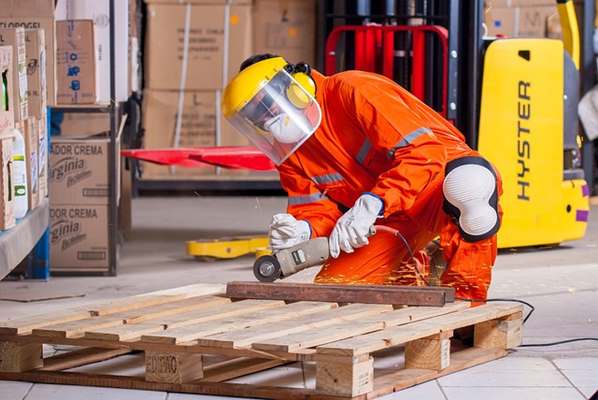
Creating a culture of safety in the workplace is essential for protecting employees and ensuring smooth operations.
Integrating industrial hygiene and emergency management can be the cornerstone of this culture. These two disciplines, though distinct, complement each other to form a robust safety net. Industrial hygiene focuses on recognizing, evaluating, and controlling workplace hazards, while emergency management prepares for, responds to, and recovers from incidents. Together, they create a proactive and reactive approach to safety. In this guide, we will explore how to seamlessly blend these disciplines into your organizational framework, creating a safe, productive, and resilient work environment.
Understanding Industrial Hygiene
Industrial hygiene plays a critical role in maintaining workplace safety. It involves the anticipation, recognition, evaluation, and control of environmental factors that may cause illness, injury, or discomfort among workers. This discipline requires a deep understanding of various hazards, such as chemical, physical, biological, and ergonomic risks. By implementing rigorous industrial hygiene practices, organizations can proactively address potential health threats before they escalate. This approach not only safeguards employees but also enhances overall productivity by minimizing downtime and health-related absences. In essence, industrial hygiene forms the foundation of a safe workplace, making it an indispensable component of any safety program.
Integrating Industrial Hygiene Programs
Seamlessly integrating industrial hygiene programs with emergency management strategies is crucial for a comprehensive safety culture. These programs systematically address workplace hazards, providing a structured approach to mitigate risks. By incorporating these programs into your emergency management plan, you ensure that safety measures are proactive and reactive. For example, regular monitoring of air quality can prevent long-term health issues, while emergency drills prepare employees for unexpected incidents. This dual approach enhances overall safety and readiness, fostering a work environment where employees feel protected and valued. Effective integration requires collaboration, ongoing training, and a commitment to continuous improvement.
Emergency Management: A Proactive Approach
Emergency management involves a proactive approach to dealing with potential crises. This discipline encompasses preparedness, response, recovery, and mitigation efforts to ensure organizations can swiftly handle emergencies. Key elements include developing comprehensive emergency plans, conducting regular drills, and maintaining open lines of communication. Preparedness involves identifying potential risks and establishing protocols to address them. Response focuses on immediate actions taken during an emergency, while recovery and mitigation aim to restore normalcy and prevent future incidents. By adopting a proactive stance, organizations can minimize the impact of emergencies, safeguard their workforce, and ensure business continuity.
Training and Education for Safety
Training and education are pivotal in fostering a culture of safety. Employees must be well-versed in industrial hygiene practices and emergency management procedures to effectively mitigate risks. Regular training sessions, workshops, and drills can enhance awareness and preparedness among staff. These educational initiatives should cover hazard recognition, emergency response, and the use of personal protective equipment (PPE). By equipping employees with the necessary knowledge and skills, organizations can empower them to take proactive measures and respond efficiently during emergencies. Continuous education also ensures that safety practices evolve with emerging risks and industry standards, maintaining a high level of workplace safety.
Creating a Safety-First Mindset
A safety-first mindset is essential for integrating industrial hygiene and emergency management. This mindset prioritizes safety in all aspects of work, from daily operations to strategic planning. It involves fostering a culture where employees feel responsible for their safety and the safety of their colleagues. Leaders play a crucial role in promoting this mindset by setting clear expectations, leading by example, and recognizing safe behaviors. Open communication channels and a non-punitive approach to reporting hazards also contribute to a safety-first environment. By embedding safety into the organizational culture, companies can create a workplace where every individual is committed to maintaining a safe and healthy environment.
Implementing Comprehensive Risk Assessments
Comprehensive risk assessments are vital for identifying potential hazards and vulnerabilities within the workplace. This process involves evaluating all aspects of the work environment, from equipment and processes to employee behaviors and external threats. Conducting regular risk assessments allows organizations to identify areas that require improvement and to implement targeted measures to mitigate risks. By systematically addressing identified hazards, organizations can prevent accidents and ensure a safer work environment. Additionally, these assessments should be documented and reviewed periodically to adapt to changing conditions and to maintain an up-to-date understanding of potential risks.
Enhancing Communication and Collaboration
Effective communication and collaboration are cornerstones of a robust safety culture. Ensuring that all employees, from frontline workers to top management, are informed about safety protocols and emergency procedures is crucial. Regular meetings, safety bulletins, and digital communication tools can facilitate the dissemination of important information. Encouraging a collaborative approach to safety, where employees can freely share concerns and suggestions, enhances overall safety awareness and engagement. By fostering a culture of open communication, organizations can quickly identify and address safety issues, ensuring that everyone is on the same page when it comes to maintaining a safe work environment.
Utilizing Technology for Safety Management
Leveraging technology can significantly enhance industrial hygiene and emergency management efforts. Advanced monitoring systems, such as air quality sensors and wearable devices, provide real-time data on potential hazards. This information allows organizations to take immediate corrective actions and to prevent incidents before they occur. Additionally, safety management software can streamline the documentation and analysis of safety data, making it easier to track trends and identify areas for improvement. Technology also facilitates better training and education through virtual reality simulations and online learning platforms, ensuring that employees are well-prepared for any safety challenges.
Promoting a Health and Wellness Culture
Promoting a culture of health and wellness goes hand-in-hand with industrial hygiene and emergency management. By focusing on the overall well-being of employees, organizations can create a more resilient and productive workforce. Health and wellness programs, such as fitness initiatives, mental health support, and ergonomic assessments, contribute to reducing workplace injuries and illnesses. Encouraging healthy habits and providing resources for physical and mental well-being also demonstrate an organization’s commitment to its employees. A holistic approach to health and wellness enhances morale and fosters a culture where safety is a top priority.
Regularly Reviewing and Updating Safety Protocols
Continuous improvement is key to maintaining a high level of workplace safety. Regularly reviewing and updating safety protocols ensures that they remain effective and relevant. This process involves analyzing incident reports, conducting audits, and staying informed about industry best practices and regulatory changes. Organizations should establish a schedule for periodic reviews and involve employees in the process to gain valuable insights from those who work directly with potential hazards. By keeping safety protocols up to date, organizations can adapt to new challenges and maintain a proactive stance on safety management.
Conclusion
Creating a culture of safety requires a comprehensive and integrated approach that combines industrial hygiene and emergency management. By understanding and addressing workplace hazards, implementing proactive emergency plans, providing continuous training and education, and fostering open communication, organizations can build a resilient and safe work environment. Leveraging technology and promoting overall health and wellness further strengthen this culture. Regularly reviewing and updating safety protocols ensures that organizations remain prepared for any challenges. Ultimately, a strong safety culture protects employees, enhances productivity, and supports the long-term success of the organization. By prioritizing safety, organizations demonstrate their commitment to the well-being of their workforce and the sustainability of their operations.




